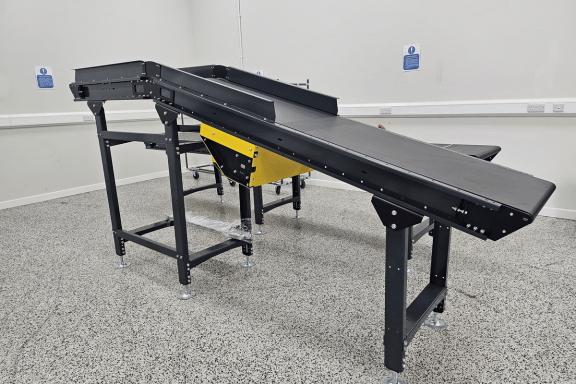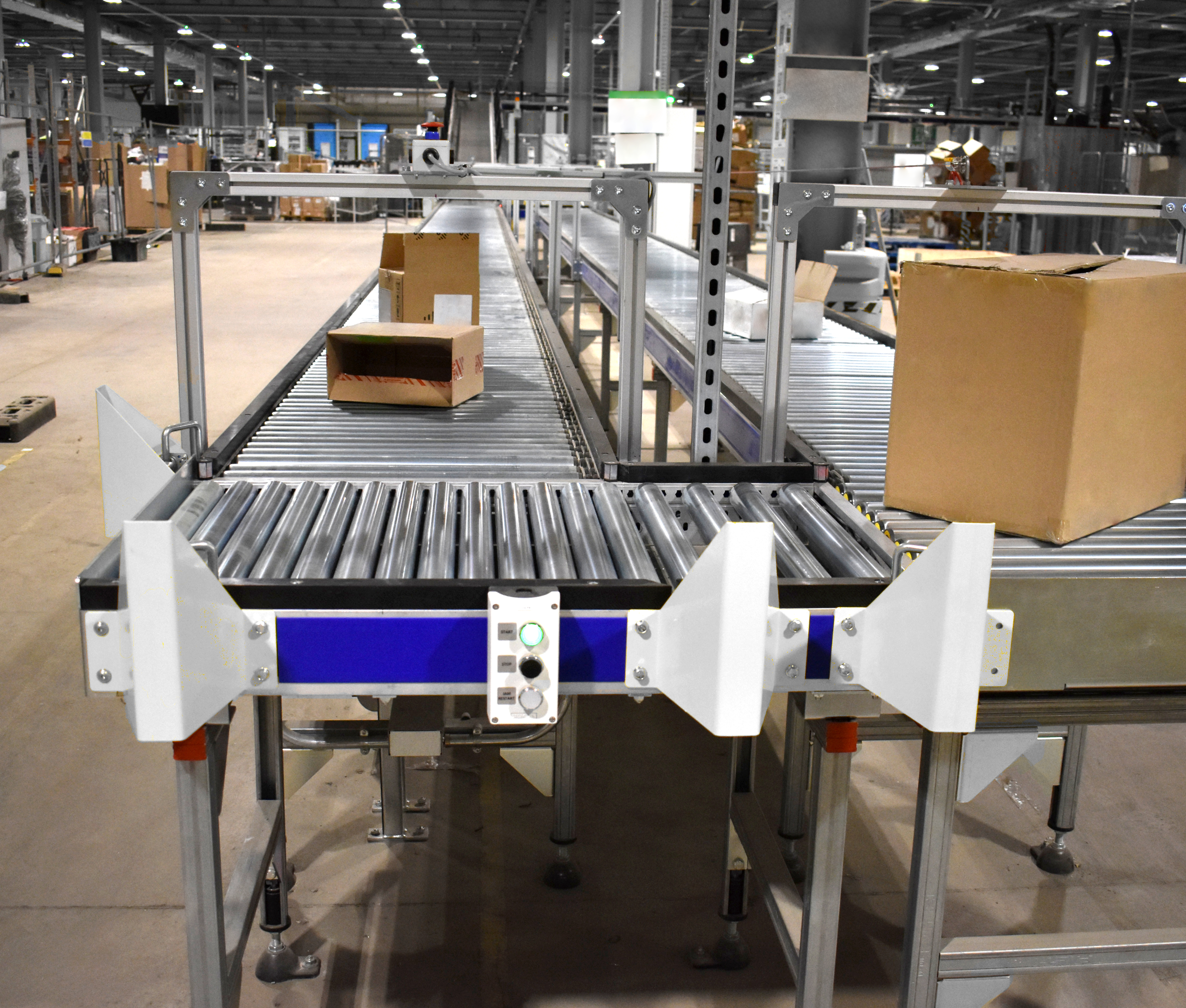In today’s fast-paced industrial environment, choosing the right conveyor system can make a significant difference in the efficiency and productivity of your business. Conveyor systems are the backbone of many industries, from manufacturing to warehousing and distribution. However, with multiple types of conveyor systems available—belt conveyors, roller conveyors, chain conveyors, and more—it can be difficult to determine which one is the best fit for your operation. This blog will compare belt conveyors with other conveyor types to help you make an informed decision.
What Are Belt Conveyors?
Belt conveyors are the most commonly used type of conveyor system. They consist of a continuous loop of material, usually made of rubber or synthetic fabric, which is driven by pulleys and supported by rollers. Belt conveyors are highly versatile and are used across many industries for moving goods of various sizes and shapes over long distances.
Key Features of Belt Conveyors:
- Continuous movement, ideal for smooth transportation
- Can handle a variety of materials, from light packages to bulk items
- Suitable for inclines and declines
- Commonly used in assembly lines, packaging, and material handling industries
Other Conveyor Types: A Quick Overview
Let’s briefly explore some other popular conveyor systems before diving into a direct comparison with belt conveyors:
-
Roller Conveyors
Roller conveyors use a series of rollers to move products along the line. They can be powered or gravity-fed and are commonly used for handling flat-bottomed items like boxes and pallets. -
Chain Conveyors
Chain conveyors use chains to move products along the line. These are often used in heavy-duty applications such as automotive assembly or metal fabrication due to their ability to handle heavy loads. -
Pneumatic Conveyors
Pneumatic conveyors use air pressure to transport bulk materials through pipelines. They are typically used for transferring powders, grains, and other lightweight materials. -
Slat Conveyors
Slat conveyors feature slats attached to a chain, creating a solid surface for moving products. They are often used in industries where products need to be handled gently or when high-heat materials are being transported.
Belt Conveyors vs. Roller Conveyors
Advantages of Belt Conveyors:
- Versatility: Belt conveyors can handle a wide range of product shapes, sizes, and weights. They are also more adaptable to different types of materials, whether they are heavy or light, abrasive or smooth.
- Continuous Movement: The smooth, continuous flow of a belt conveyor makes it ideal for moving products over longer distances, particularly on inclines or declines.
- Precision: Belt conveyors are better suited for applications requiring precise control over product positioning and movement, such as in assembly lines.
Advantages of Roller Conveyors:
- Cost-Efficiency: Roller conveyors, especially gravity-fed models, tend to be less expensive than powered belt conveyors.
- Durability: They are often more durable for transporting heavier materials or flat-bottomed items like boxes.
- Ease of Maintenance: Roller conveyors generally require less maintenance since there are fewer moving parts compared to belt systems.
When to Choose?
Choose belt conveyors if your operation requires the transportation of a variety of product shapes or sizes, or if you need to move items over longer distances or inclined surfaces. Opt for roller conveyors when your operation involves heavy, uniform items or you are looking for a more cost-effective option for short-distance transportation.
Belt Conveyors vs. Chain Conveyors
Advantages of Belt Conveyors:
- Gentle Handling: Belt conveyors are ideal for transporting delicate or lightweight items without causing damage, making them suitable for industries like food processing or electronics.
- Low Energy Consumption: Belt systems are often more energy-efficient for light to medium loads.
Advantages of Chain Conveyors:
- Heavy-Duty Capabilities: Chain conveyors excel at handling heavy materials, making them the preferred choice in industries like automotive, metalworking, or construction.
- Durability: Chain conveyors are extremely durable and can withstand high temperatures, abrasive materials, and other harsh conditions.
When to Choose?
Select belt conveyors if your business needs to transport lightweight or fragile goods. Go for chain conveyors when you need to move heavy items or work in demanding industrial environments.
Belt Conveyors vs. Pneumatic Conveyors
Advantages of Belt Conveyors:
- Material Flexibility: Belt conveyors are suitable for a wider variety of materials, including both bulk and discrete items.
- Lower Cost: Belt conveyors tend to be more affordable to install and maintain compared to pneumatic systems.
Advantages of Pneumatic Conveyors:
- Enclosed Transport: Pneumatic conveyors are ideal for transporting fine powders, dust, or grain in a sealed system, minimizing contamination and spillage.
- Versatility for Bulk Materials: These conveyors are better suited for moving bulk quantities of lightweight materials over complex routes.
When to Choose?
If you are handling packaged products, bags, or mixed materials, a belt conveyor is likely the better option. Pneumatic conveyors are more suitable for businesses dealing with fine powders or bulk materials that need to be transported through enclosed systems.
Final Thoughts: Which Conveyor System Is Best for Your Business?
When choosing between belt conveyors and other conveyor types, the decision depends on the specific needs of your business. Belt conveyors are an excellent all-around choice for industries that require flexibility, continuous movement, and handling of diverse materials. On the other hand, roller conveyors are perfect for handling flat-bottomed, heavy items, while chain conveyors can handle much heavier loads. If your business deals with bulk powders or fine materials, pneumatic conveyors might be the right choice.
To make the best decision, assess the type of materials you’ll be transporting, the distance they need to travel, the environment they’ll operate in, and your overall budget. With the right conveyor system in place, you can significantly improve the efficiency and productivity of your business.






